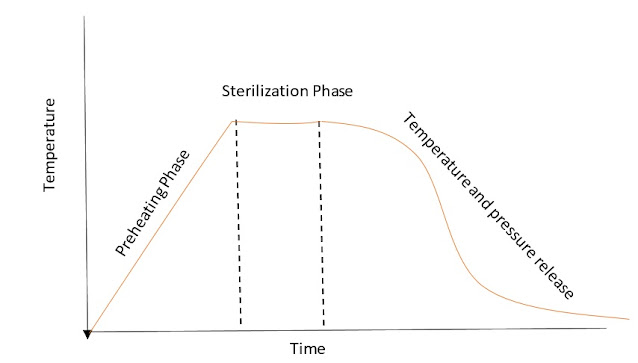Sterilization and Preheating Difference
For biological and pharmaceutical dosage forms sterilization is required. sterilization is most important to prevent the external contamination of viable organisms which is to prevent microbial growth inside the dosage forms. There are many types of sterilization and are mentioned below. Microbial contamination is very dangerous, which can cause patient death. So this post prepared, to understand Sterilization and preheating differences.
Types of Sterilization:
- Moist
heat sterilization
- Radiation
sterilization
- Dry
heat sterilization
- Gas
sterilization
- Chemical
sterilization.
- Filteration
Though the temperature is a determining factor for sterilization, there is a difference between
sterilization temperature and preheating temperature.
What is a sterilization temperature?
In normal cases, sterilization
temperature is a temperature at which the microorganism present in the load are
killed. Normally sterilization temperature is different for various methods of
sterilization. For moist heat sterilizers, 121°C for 15 LBS pressure is a requirement.
For dry heat sterilizers, more than 300°C are required for Depyrogenation. For
heat-sensitive products again the temperature is reduced and exposure time is
increased.
Sponsored Search:
- Difference Between Sterilization and Depyrogenation
- Steam Quality Test
What is preheating temperature?
However, preheating is required to achieve
sterilization temperature. We cannot operate the autoclave which has
temperature more. Hence during the load preparation phase, the temperature of the autoclave
/ or any sterilizer is cooled down. Again after loading articles for sterilization, the sterilizer will start to heat up to gain temperature. This is called as preheating.
See
the below graph that will differentiate between sterilization temperature and
preheating temperature. For sterilization to occur preheating temperature is a must. Then only it will raise to sterilization temperature. All the sterilizers
are controlled through software, so as per the set program, the required
temperature will raise automatically. It has the controls to stop the
temperature also.
If you like the post please share n subscribe. it will motivate me to post more blogs.
Thank You...!

👌👌
ReplyDeleteThank you Prashant sir for the elaborated explanation.
ReplyDeleteYarsons International is committed to manufacture better products with advanced technology.
ReplyDelete